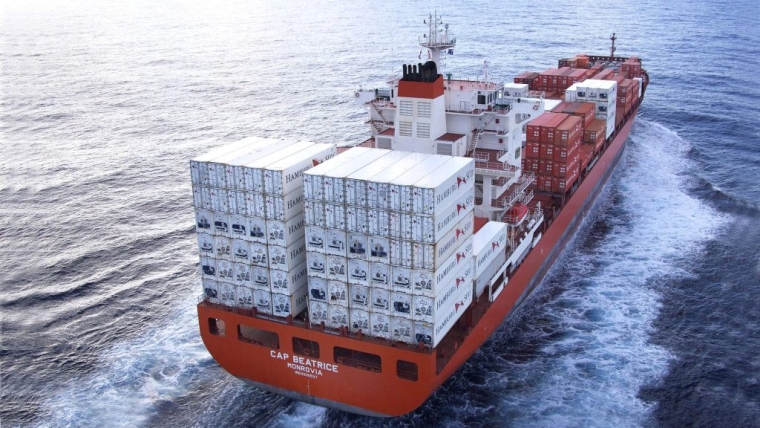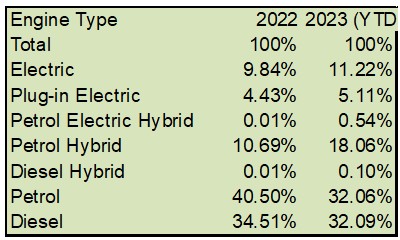
The latest merchandise trade data were released this past week for August 2023, and compared to the same month a year ago they revealed had some interesting points.
Overall our trade deficit decreased to $2.291 billion in August from $2.634 billion in the same month of the prior year. It was led largely by falls in imports. These fell by -8.1% to $7.28 billion, led by fall in purchase of petroleum and products (-16%); chemical products (-64%) and diagnostic reagents test kits (-90%). On the other hand, imports rose for vehicles, parts, and accessories (+12%); motor vehicles (+37 %); mechanical machinery and equipment (+9.3%) and turbo-jets and turbo-propellers (+109 %).
On a per nation basis imports fell from China (-19%) and Australia (-9.7%), US (-5.4%) and South Korea (-13%) but increased from the EU (+12%). Not surprisingly exports declined by a softer -5.6% to $4.99 billion, driven by fall in sales of meat and edible offal (-15 %); milk powder, butter, and cheese (-3.8%); logs, wood, and wood articles (-17%). Exports fell to China (-18%), Australia (-9%) and Japan (-11%) but rose for the US (+9.6%) and the EU (+7.7%).
Along with the fall in values of the primary products which didn’t help the trade deficit, the reduction in imports especially petroleum products did. In 2022 spikes occurred partly due to more tourism taking place but also due to higher international prices due to Russia’s invasion of Ukraine de-stabilising world markets
The main big import that increased was that for vehicles and associated vehicle parts. This got me thinking about what the future will look like and what impact it will have on our Current Account and perhaps the New Zealand economy. Currently, our not-so-great trade deficit will be helping to keep the NZ$ low although given the number of variables involved it would be difficult to put a figure on this.
One of the things that passed through my thoughts was how will the increasing number of electric vehicles impact upon future trade balances. The table below gleaned from the Motor Industry Association's information shows that EV’s and hybrids are certainly increasing in number and with combustion engine vehicles (as judged by new vehicle sales) decreasing from 75% in 2022 of the total to down to 64% so far this year, and that should mean petroleum sales should decrease .Despite the recent drops, in 2022, the value of petroleum imports grew by +76% on the previous year, largely due to Russia. Petroleum makes up the largest percent of imports with a total value at $9.9 bnl and while vehicles also climbed (up +11%) they still make up less than half that of petroleum (around $4 bln).

New electric cars are certainly considerably more expensive than their combustion counterparts but while fuel is likely to continue to climb at the pumps and possibly also at the boarder, electric cars are expected to decrease in value. This could be driven by increasing numbers of second hand vehicles arriving in New Zealand.
Currently New Zealand is still not fully renewable with electricity production but that is likely to change within the next decade.
Currently 82% of electricity is considered renewable. So, while vehicles imports may still increase over time it is quite possible that petroleum imports will start to decrease, certainly in volume and eventually in cost.
Fortunately, there is still plenty of room to add value to our primary exports so while it may take a decade or so all things considered we should see permanent improvements to our BoP with less (as a percentage) imports and more value from our exports. This should provide a general lift to our general standard of living, although governments will need to whack a considerable road user charge onto EV vehicles, (supposedly starting as soon and April 2024), to keep the tax revenue coming in. But hopefully with less overseas funds going on both petroleum and on the ETS balancing act the country should be better off.
Our Balance of Payments should benefit from a higher NZ$ from the improved economic performance (all else being the same) but, unfortunately this may not benefit primary producers although imported goods such as fertilisers should also be cheaper, relatively. There had to be a downside somewhere, unfortunately.
On the positive side, if this does take a decade or so to come to fruition we should be in a new paradigm and hopefully food production is back with higher status than it currently has and can absorb lower returns than a low NZD might provide. (And if I’m wrong, we all will have forgotten these predictions as well.)
10 Comments
The need to install new generation infrastructure will be expensive.
We will all be so much better off once National starts flogging off our two million dollar houses.
You can actually see the import quantities here. It does appear we are still importing greater volumes and not just nominal values.
Per vehicle efficiency has actually increased for the last two decades but this has been substantially offset by population growth, increasing car ownership rates and the greater distances New Zealanders drive.
My thought is that the initial purchase price of an EV is still far too high. There is a whole class of quadricycles, e-mopeds/quadricycles and e-bikes we are missing in our transport solutions. What we've lazily tried to do is just subsidise transport solutions that weren't working that well anyway. The kids on these illegal 2hp e-bikes have the right idea, something that can zip along at up to 50km/h and climb hills is the vehicle New Zealand needs not $70k Tesla's.
People that buy Teslas can afford e-bikes and scooters. Has it occurred to you they don't want them because they don't meet their needs/wants?
I know 3 people with Teslas, they all also have ebikes. 2 of them bike to work regularly using them.
So, like i said, they can already afford e-bikes, and still they got a Tesla because the e-bike doesn't fulfill enough of their transportation requirements.
It not e-bike or EV like Squishy was implying, its e-bike and EV.
I'd like to see some actual estimation of the quantity of oil product imports displaced by electric vehicles, the cost of the vehicles per year and projections.
E cars also need less maintenance - I have had one for 4 years, replaced tyres and had steering checked. No maintenance really with about 18 moving parts plus updated online. I also use E bike and have solar like many of my e car friends do as well. Simply hoping food values go up, fert comes down is not going to work. A lower exchange rate gives you more income but import cost rise as you need more NZD to pay in USD or others. Food is too cheap but there is no food shortage and people just try to produce more when there's to much already.
Just been with farming rellies in Switzerland. Same issues as NZ - wool a disaster. All companies can't get staff - swiss rail short 20% of staff, Chronically short of teachers, nurses etc etc. Housing to expensive in one of the highest income countries in the world - same story everywhere.
Unfortunately, I don't think the Ev's been purchased are going into high mileage roles. To really make a impact, they need to be used by those doing high mileage, couriers, salespeople, etc.
There are plenty in those sorts of roles. Tesla taxis are becoming way more common, and plenty of reps with EVs. But the charging infrastructure really isn't there for the really high milage users, non-urban reps.
No decent EV vans yet for couriers that I can think of, the e-deliver and e-transit aren't really up to a full day courier driving, they just don't have enough range/battery.

We welcome your comments below. If you are not already registered, please register to comment
Remember we welcome robust, respectful and insightful debate. We don't welcome abusive or defamatory comments and will de-register those repeatedly making such comments. Our current comment policy is here.